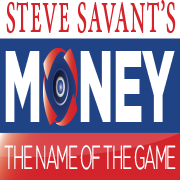 Mesa 4/27/2018 10:00:00 AM
Mesa 4/27/2018 10:00:00 AM
News / Finance
Indexing with Mutual Funds, ETFs Options, Annuities & Life Insurance
There’s a Variety of Ways to Participate in Index Investments

Each index fund’s prospectus explains its approach to selecting investments, as well as providing its expense ratio, historical returns, risk profile, and other fund information. Most index funds are full replication funds. That means they buy all of the securities in the funds they track. Others are sample-based. Providers of these funds may use complex mathematical models to identify securities from among those in the index or look for price inconsistencies on which they can capitalize.
An enhanced index fund chooses selectively from a particular index portfolio in order to produce a slightly higher return. The goal is to narrowly beat the index by anywhere from a fraction of a percent to two percent- age points but not more, since a wider spread would classify the enhanced fund as an actively managed mutual fund rather than an index fund. Enhanced index fund managers may achieve higher returns by identifying the undervalued stocks in the index, adjusting the holdings to include a larger proportion of securities in higher- performing sectors, or using other investment strategies, such as buying derivatives or using leverage. While enhanced index funds may expose you to the risk of greater losses than their plain-vanilla counterparts, they may also offer an opportunity for higher returns.
Quant funds are named for their quantitative investment style. They aim to beat the index funds they imitate by relying solely on statistical analysis to decide which securities will top the benchmarks. For example, instead of buying all the stocks in the S&P 500, a quant fund provider would buy selected stocks that its analyses indicate will turn a higher profit. But no indexing approach guarantees a strong return or protects against losses in a falling market.
The vast majority of ETFs are index- based, which means that the ETF port- folio is determined by the components of the particular index to which the fund is linked. For example, the first commercial ETF, the SPDR—short for Standard & Poor’s Depository Receipts and pronounced “spider”—holds all the stocks in the S&P 500.
ETFs are fully transparent, which means you can find the current list of securities an ETF holds on the fund provider’s website at any time. In con- trast, actively managed mutual funds update their list of holdings quarterly but aren’t required to report any portfo- lio changes that occur within a quarter.
Contributions from the book Index Investing in this press release are used with permission from Light Bulb Press.
